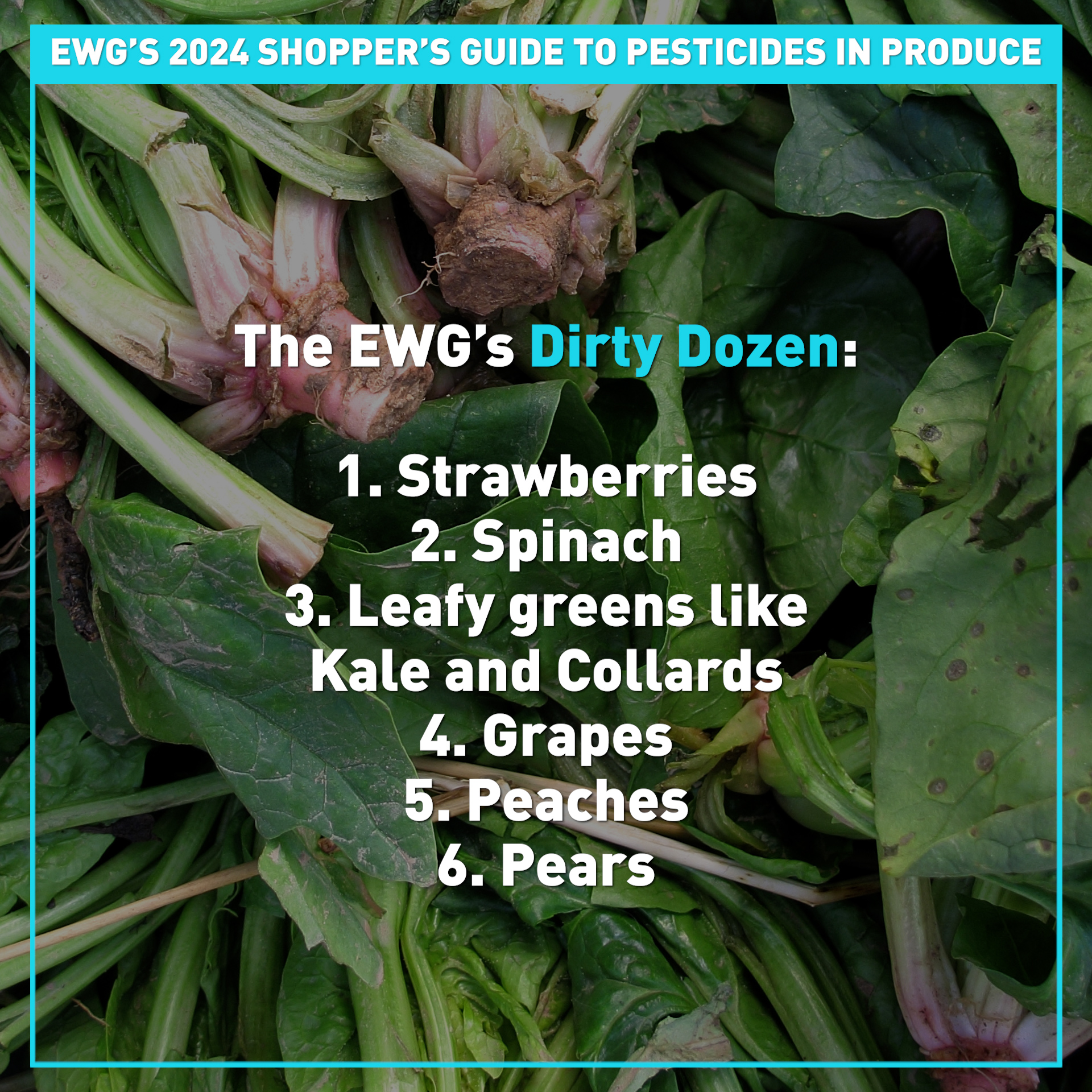New guide to safer choices
The latest edition of an annual consumer's guide published Wednesday reveals that almost three-fourths of non-organic fruits and vegetables sampled contained traces of toxic pesticides while the "dirty dozen"—including strawberries and spinach—tested at levels closer to 95%.
Scientists with the Environmental Working Group (EWG)
document in their new report, "2024 Shopper's Guide to Pesticides In
Produce," that four out of five of the most frequently detected pesticides
found on the twelve most-contaminated produce items were fungicides that could
have serious health impacts.
"There's data to suggest that these fungicides can
disrupt the hormone function in our body," EWG senior scientist Alexa
Friedman told Common Dreams, adding that the chemicals had
"been linked to things like worse health outcomes" and "impacts
on the male reproductive system."
The four fungicides detected on the Dirty Dozen produce were fludioxonil, pyraclostrobin, boscalid, and pyrimethanil. Two of these—fludioxonil and pyrimethanil—were also found in the highest concentrations of any pesticide detected.
The annual Dirty Dozen and Clean Fifteen lists are based on
a review of Department of Agriculture and Food and Drug Administration data.
This year, EWG looked at results from 47,510 samples of 46 fruits and
vegetables.
2024's Dirty Dozen list is similar to previous years, with strawberries, spinach, and a trio of hearty greens—kale, collard greens, and mustard greens—once again taking the top three spots. The full list is as follows:
1.
Strawberries
2.
Spinach
3.
Kale, collard, and mustard greens
4.
Grapes
5.
Peaches
6.
Pears
7.
Nectarines
8.
Apples
9.
Bell and hot peppers
10.
Cherries
11.
Blueberries
12.
Green beans
The four fungicides were found on the fruits and vegetables
for which new data was available this year—blueberries, green beans, peaches,
and pears—for some of them at high levels.
"One reason we might see fungicides in high
concentrations compared to other types of pesticides are that fungicides are
often sprayed on the produce later in the process," Friedman said.
Farmers frequently apply fungicides after harvest to
protect crops from mildew or mold on the way to the grocery store.
Beyond fungicides, testing also turned up the
neonicotinoids acetamiprid and imidacloprid, which harm bees and other pollinators and have
been associated with damage to the development of children's nervous
systems.
Testing also revealed the pyrethroid insecticides
cypermethrin and bifenthrin. While there are fewer studies on these pesticides,
existing research suggests they may also harm children's brains. More than 1 in
10 pear samples tested positive for diphenylamine, which is currently banned in
the European Union over cancer concerns.
Most of the pesticides detected on the Dirty Dozen are
legal, but one exception is acephate, an organophosphate insecticide that is
essentially prohibited for use on green beans but is still found on them. One
sample tested positive for levels 500 times the Environmental Protection
Agency's (EPA) legal limit.
In total, EWG found that nearly 75% of non-organic fruits
and vegetables tested were contaminated with pesticides. However, nearly 65% of
the conventional items on the Clean Fifteen list were pesticide free. This
year's Clean Fifteen are:
1.
Sweet corn
2.
Avocados
3.
Pineapple
4.
Onions
5.
Papaya
6.
Sweet peas
7.
Asparagus
8.
Honeydew melon
9.
Kiwi
10.
Cabbage
11.
Watermelon
12.
Mushrooms
13.
Mango
14.
Sweet potatoes
15.
Carrots
The Shopper's Guide is primarily geared toward helping
consumers make informed choices as they choose between conventional and organic
items, which may be more expensive or harder to find.
"We always recommend that people consume as many
fruits and veggies as possible, whether they're organic or conventional,"
Friedman said.
But for people concerned about consuming pesticides, she
added, EWG recommends "using the Shopper's Guide as a way to prioritize
which fruits and vegetables to buy organic to reduce your pesticide
exposure."
EWG recommends prioritizing organic versions of Dirty Dozen
items.
As a whole, the EWG advocates for policymakers and
regulators to do more to understand the real risks posed by pesticides and
protect people from them.
"We still feel that there needs to be more studies
that really focus on the health effects of these pesticides, specifically the
pesticides that we found in high detection this year, so that we can better
understand how these might impact health for susceptible populations,
particularly for children," Friedman said.
She added that while many of the pesticides detected in
tests were at or below legal limits set by the EPA, "legal doesn't always
mean that they're safe for everyone."
In a 2020 study, for example, EWG researchers found that for
nearly 90% of common pesticides the EPA had failed to apply an extra margin of
safety for children when setting limits, even though it is required to do so
under the Food Quality Protection Act.
Currently, the EPA has a chance to improve regulations as
it rewrites a ban on
chlorpyrifos on food, which was overturned by a court on a technicality. It is
also reviewing whether or not the pesticide dimethyl tetrachloroterephthalate
(DCPA) can be used safely
after it acknowledged the "significant risks" it posed to human
health.
EWG is also raising the alarm about a slate of new rules that some lawmakers may try to attach to the 2023 Farm Bill or other important legislation. These proposed laws, such as the Agricultural Labeling Uniformity Act and the EATS Act, would prevent states or localities from setting additional regulations on pesticides.
In September
2023, EWG joined with 184
other environmental groups in sending a letter to the House and Senate opposing
such measures, which the groups argue take "decision-making out of the
hands of those most impacted by pesticide use."
"States and localities are often in a much better position than the EPA to quickly assess risks, consider emerging evidence, and to make decisions to protect their unique local environments and communities including schools and childcare facilities, from toxic pesticides," the letter states.
"Undermining that authority would hamstring critical local efforts to
address cancer and other human health risks, threats to water resources, and
harms to pollinators and other wildlife."
